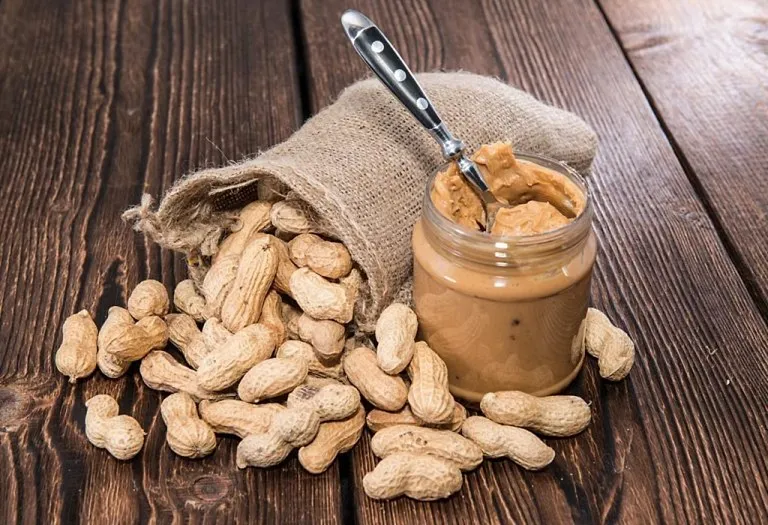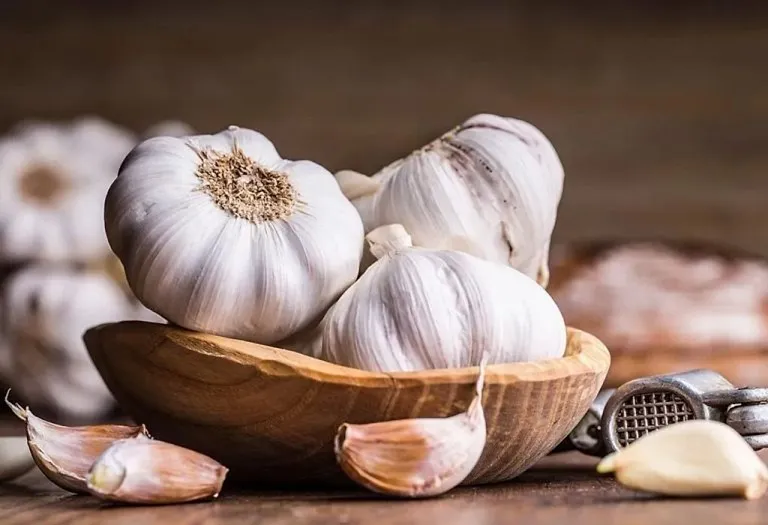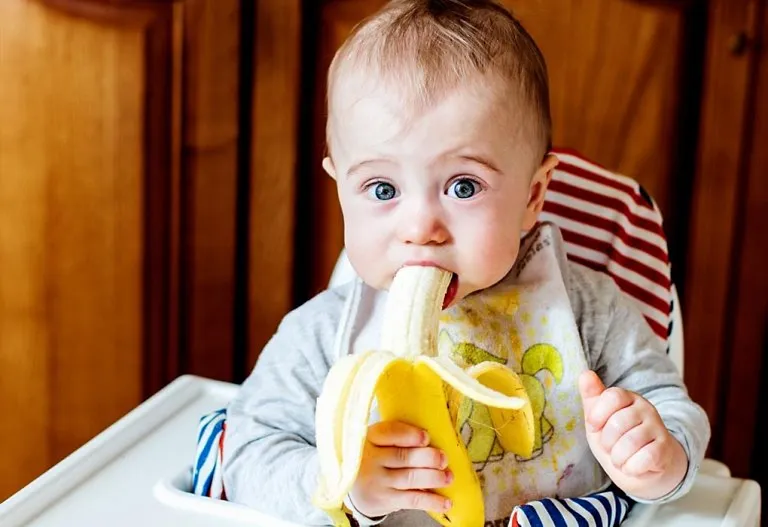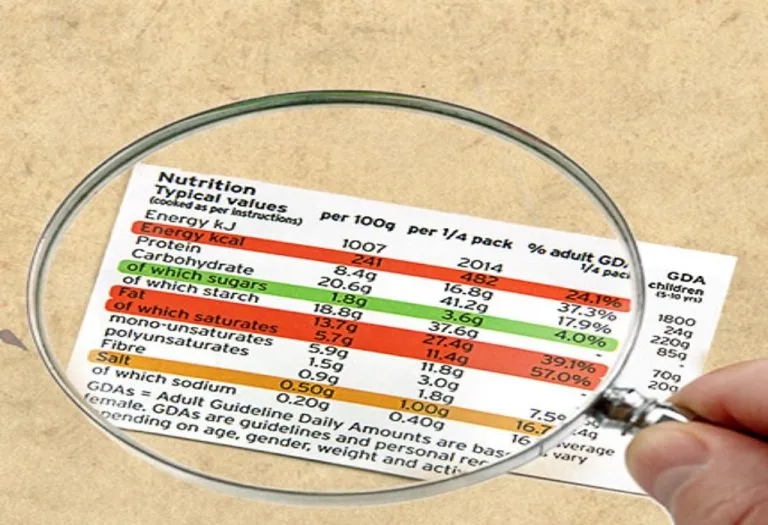Peanut Butter for Babies – When and How to Introduce?

- When Can Babies Have Peanut Butter?
- How to Introduce Peanut Butter to Infants?
- Precautions Before Giving Peanut Butter to Your Young Child
- Serving Peanut Butter to Your Infant
- Peanut Butter Allergy
- Symptoms of Peanut Allergy in Babies
- Peanut Butter Recipes for Infants
- FAQs
Peanut butter is delicious and is packed with essential nutrients. Other than being oh-so-yummy and satiating, it also helps in boosting immunity and lowering the risk of heart diseases, diabetes, and other chronic health problems. If your baby has started on solids and you’re planning to introduce it to your little one, you will want to know when you should include it in her diet and how! Peanut allergies are common in children, so you’ll have to take extra caution when introducing peanut butter as baby food to your munchkin. It is suggested that you consult a doctor before making your baby taste peanut butter. Read on to learn all about peanut butter for babies.
When Can Babies Have Peanut Butter?
When can babies have peanut butter is a common question that most parents ask. As peanuts are highly allergenic in nature, parents are hesitant about giving it to their babies. It can be introduced to babies after they turn 10 months of age, and in very small quantities. Children having a family history of allergies, like egg allergy or eczema are at a high risk of food allergies. Research has shown that introduction of peanuts early in life will help in preventing peanut allergy in the future. But you must introduce peanut butter to your baby only after checking with a doctor.
How to Introduce Peanut Butter to Infants?

It is important to consult a doctor before introducing peanut butter to your little one. Here are some points that you should take into consideration before introducing peanut butter to infants.
- Peanut butter should be diluted with a little hot water and made into a puree like consistency. Then give a little with a spoon and monitor your baby for 10-15 minutes for about 24 hours. If your baby is non-allergic, she will not have any reactions like hives, rashes, or respiratory problems. In that case, you can continue giving her peanut butter.
- You can test by putting a little in the middle of her bottom lip. If she is allergic, there will be a reaction immediately.
- Start by giving a very small amount of peanut butter to your little one even if she has had no allergic reaction the first time.
Precautions Before Giving Peanut Butter to Your Young Child
Peanut butter is highly allergenic in nature. Certain precautions should be taken while or before giving peanut butter to the babies for the first time.
- Introducing your baby to semi-solid or solid foods like rice, fruits, and vegetables, which have a low allergy risk, is important before giving high allergenic foods like peanut and eggs. Remember to wait for 3-4 days or even for a week before introducing a new food. This will give enough time to watch out for any signs of allergy. If in case, you see any signs of an allergic reaction, stop giving that food immediately.
- It is important to introduce peanut butter or anything made of peanut at home rather than at a restaurant or a day-care centre. However, there are some mothers who do so at a doctor’s clinic.
- You should be cautious while giving peanut butter because the texture being thick, a baby could choke it.
- Peanut butter should be given gradually to a baby and introduced in very small quantities.
- Check with an allergist before introducing peanut butter to your baby.
Serving Peanut Butter to Your Infant
Introducing peanut butter to your infant can be a great way to provide them with essential nutrients and potentially reduce the risk of developing a peanut allergy. Here’s a guide on how to serve peanut butter to your infant based on their age.
1. For 6 Month Old
At six months old, you can start introducing peanut butter to your baby. Begin with a very small amount to ensure they do not have an allergic reaction. Mix a tiny bit of smooth peanut butter with breast milk, formula, or water to thin it out and make it easier for your baby to swallow. Offer this mixture on a spoon or mixed into pureed foods.
2. For 9 Month Old
By nine months, your baby may be ready for slightly thicker consistencies. You can spread a thin layer of smooth peanut butter on a piece of bread or a soft cracker. Make sure the peanut butter is not too thick to avoid any choking hazards. Always supervise your baby while they are eating and be attentive to any signs of an allergic reaction.
3. For 12 Months Old
When your baby reaches twelve months, they can handle more varied textures and foods. You can offer smooth or creamy peanut butter directly or mix it into foods like oatmeal or yogurt. At this stage, you might also start introducing small amounts of chunky peanut butter, but ensure that the pieces are small enough to not pose a choking risk. Continue to watch for any allergic reactions and consult with your pediatrician if you have any concerns.
Peanut Butter Allergy
Peanut butter allergy is a severe allergic reaction. It is caused when the antibodies which help in fighting unfamiliar proteins in the peanut prompts histamine release.
The reaction causes certain symptoms like rash, itchy skin, or hives. The skin becomes red and bumpy at times mostly in the face and around the mouth and at times at other places in the body. The reaction can be caused either by consuming peanut butter or simply by coming in contact with peanut butter.
In severe cases of peanut butter allergy, babies may experience a life-threatening respiratory problem called Anaphylaxis. In a condition like this, the allergic reaction causes the throat to swell up constricting the breathing passage meanwhile making it difficult to breathe. It could even trigger low blood pressure, fast pulse rate and as a result, the baby may go into a shock.
Symptoms of Peanut Allergy in Babies
Allergy symptoms vary from mild to severe. In case you suspect your little one with peanut allergy, consult an allergist right away. Listed below are the symptoms:
- The skin may appear to be itchy with small spots or large welts.
- The area around the mouth or the throat may be itchy or have a tingling sensation.
- In some cases, the baby may experience itching anywhere in the body where the peanut has come in contact with the skin.
- Sneezing and wheezing may occur when the dust from peanuts or the shells are inhaled.
- A baby may experience nausea, loose motion, stomach cramps, and even lightheadedness.
- The nose may be blocked or become very runny as a result of which the baby may experience breathlessness.
- A rare condition called anaphylaxis may trigger respiratory problems and the body may go into a shock.
Peanut Butter Recipes for Infants
Peanut butter recipes are loaded with nutrients, dietary fibre, proteins, and vitamins. These foods containing peanut butter enhance the development of bones and also cure constipation in kids. Below are three peanut butter recipes you can introduce to your baby after checking with your baby’s doctor.
1. Peanut Butter Banana Smoothie
It is a creamy and delicious milkshake which is prepared with bananas, peanut butter, and milk. It is very easy to make and quite filling.
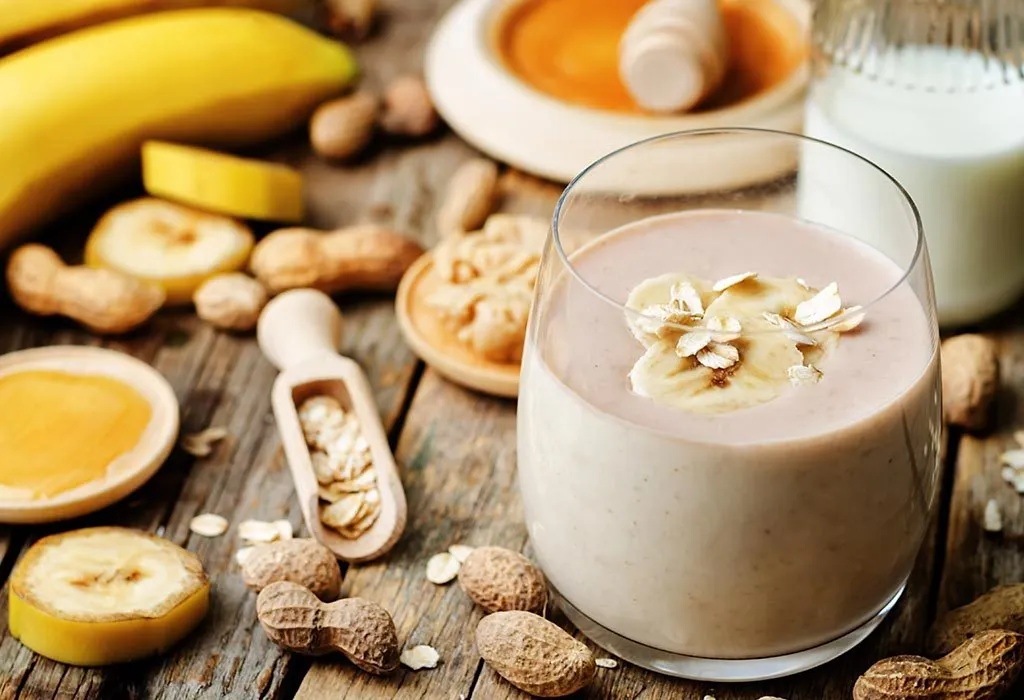
Ingredients
- Bananas (medium) – 2
- Milk – 2 cups
- Peanut Butter – 2 tbsp
How to Prepare
- Peel the bananas and slice them into pieces.
- Put the pieces in the blender along with the milk and peanut butter.
- Blend everything together.
- Pour it into a small glass and serve.
2. Peanut Butter Kulfi
It is a delicious mix of the traditional Indian kulfi with peanut butter.
Ingredients
- Milk – 1 litre
- Sugar – 2 tbsp
- Peanut butter – 2 tbsp
- Salt – pinch
How to Prepare
- Take a pan and boil the milk.
- Add the sugar and let it boil till the milk is reduced to half in quantity.
- Once the milk reduces to half, add peanut butter and salt.
- Whisk it well.
- Pour the mixture into kulfi moulds.
- Deep freeze for 5-6 hours.
3. Peanut Butter Yogurt Dip
A creamy and delicious dip that pairs perfectly with sliced fruits or soft vegetables.
Ingredients
- Plain yogurt – 1/2 cup
- Peanut butter – 2 tbsp
- Honey – 1 tsp (optional, for babies over 12 months)
How to Prepare
- In a bowl, combine the plain yogurt and peanut butter.
- Mix until smooth and well combined.
- If desired, add honey and stir well.
- Serve the dip with sliced fruits like bananas, apples, or soft vegetables like steamed carrot sticks.
FAQs
1. Can I use crunchy peanut butter for my baby?
While smooth peanut butter is generally recommended for younger infants to reduce the risk of choking, you can introduce crunchy peanut butter in small quantities once your baby is around 12 months old and has developed better chewing skills. Ensure the pieces are small and supervise your baby while eating.
2. Can peanut butter cause constipation in babies?
Peanut butter is not typically known to cause constipation in babies. However, because it is rich in fats and proteins, it should be given in moderation as part of a balanced diet. Ensuring your baby has enough fiber from fruits, vegetables, and whole grains can help maintain regular bowel movements.
3. Can peanut butter help with my baby’s weight gain?
Peanut butter is nutrient-dense and high in healthy fats, protein, and calories, making it a good option for babies who need to gain weight. Incorporating peanut butter into your baby’s diet can provide essential nutrients and help increase caloric intake. However, it should be part of a balanced diet and not given in excessive amounts.
4. Can I mix peanut butter with my baby’s formula or breast milk?
Yes, you can mix a small amount of smooth peanut butter with your baby’s formula or breast milk to help introduce the flavor and nutrients of peanut butter. Ensure that the mixture is smooth and well-blended to avoid any choking hazards. This method can be a gentle way to start introducing peanut butter to your infant.
This was about peanut butter for infants. Peanut butter is a favourite among many, chiefly for its taste and rich, creamy texture. However, peanut being a common allergen, it would be best not to give it to your little one in case she is allergic to peanuts. After all, nothing should be more important than your little one’s well-being.
References/Resources:
1. Peanut & Peanut Butter; Solid Starts; https://solidstarts.com/foods/peanut/
2. Dos and Don’ts for Baby’s First Foods; EatRight.org; https://www.eatright.org/health/pregnancy/babys-first-foods/dos-and-donts-for-babys-first-foods
3. When can I start giving my baby peanut butter?; American Academy of Pediatrics; https://www.healthychildren.org/English/tips-tools/ask-the-pediatrician/Pages/When-can-I-start-giving-my-baby-peanut-butter.aspx
4. Chan. E, Abrams. E, Hildebrand. K, Watson. W; Early introduction of foods to prevent food allergy (Allergy, Asthma & Clinical Immunology); National Library of Medicine; https://www.ncbi.nlm.nih.gov/pmc/articles/PMC6157280/; September 2018
5. Peanut Butter; Food Data Central; U.S. Department of Agriculture; https://fdc.nal.usda.gov/fdc-app.html#/food-details/1100559/nutrients
6. Peanut allergy; Mayo Clinic; https://www.mayoclinic.org/diseases-conditions/peanut-allergy/symptoms-causes/syc-20376175
7. Peanut Allergy: What to Know About the Latest Prevention Guidelines; American Academy of Pediatrics; https://www.healthychildren.org/English/health-issues/conditions/allergies-asthma/Pages/Peanut-Allergies-What-You-Should-Know-About-the-Latest-Research.aspx
8. Starting Solid Foods; American Academy of Pediatrics; https://www.healthychildren.org/English/ages-stages/baby/feeding-nutrition/Pages/Starting-Solid-Foods.aspx
Also Read:
Can Babies Eat Hummus?
Greek Yogurt for Infants
Can Babies Have Pickles?
Is It Safe To Give Ghee To Baby?
Was This Article Helpful?
Parenting is a huge responsibility, for you as a caregiver, but also for us as a parenting content platform. We understand that and take our responsibility of creating credible content seriously. FirstCry Parenting articles are written and published only after extensive research using factually sound references to deliver quality content that is accurate, validated by experts, and completely reliable. To understand how we go about creating content that is credible, read our editorial policy here.







